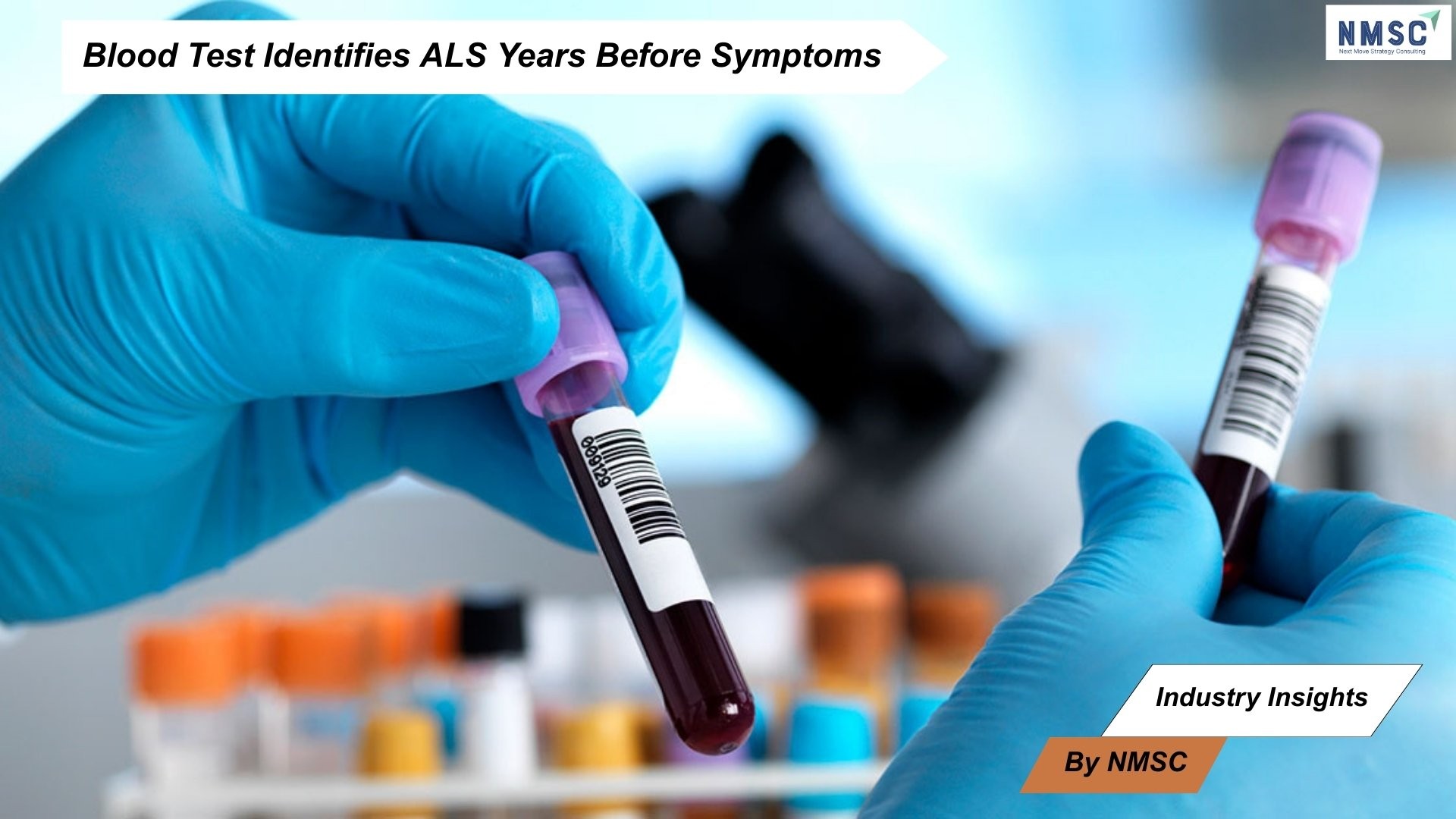Blood Test Identifies ALS Years Before Symptoms
Published: 2025-09-06

Industry Insights from Next Move Strategy Consulting
Revealing the Hidden Timeline
A newly developed blood test that detects proteins unique to amyotrophic lateral sclerosis (ALS) can identify individuals with the disease years before symptoms appear, according to recent research.
"We had always assumed that ALS was a rapid disease that starts 12 to 18 months before symptom onset," said study investigator Alexander Pantelyat, MD, associate professor of neurology at the Johns Hopkins University School of Medicine. "But when we look at our findings, we see this has been a process that goes on for a decade or so before the patient ever steps into the doctor's office or clinic."
The study was published on August 19 in Nature Medicine.
A Distinct Molecular Signature
ALS diagnosis has long been hindered by the lack of reliable biomarkers. Current approaches, such as measuring neurofilaments, provide limited insight. The new research highlights a panel of proteins that may serve as a robust diagnostic tool, enabling earlier patient care, trial enrollment, and greater understanding of disease progression.
Researchers noted that most ALS patients live only 2–4 years after symptoms begin, but the findings suggest disease processes may start 10–15 years before clinical signs emerge.
In a cross-sectional study, investigators analyzed plasma samples from 281 ALS patients and 258 healthy participants at the University of Turin and the National Institutes of Health. From a total of 2,886 proteins, a proteomics platform identified proteins specific to ALS.
Machine Learning Model Development
Using a training set of 181 ALS patients, 172 healthy controls, and 137 patients with other neurological disorders, researchers developed a machine learning model. The model was later tested on 48 ALS patients, 42 healthy individuals, and 33 patients with other neurological conditions.
"It's crucial for patients and their families to be able to discern between ALS and other conditions for diagnostic clarity, prognostic understanding and eligibility to enroll into the appropriate clinical trials," Pantelyat said.
The study ultimately identified 33 proteins forming a "distinct molecular signature" that distinguished ALS cases from both healthy controls and patients with conditions such as corticobasal syndrome, dementia, Lewy body dementia, multiple system atrophy, Parkinson's disease, and progressive supranuclear palsy.
Accuracy and Validation
When combined with clinical data, the protein model achieved an area under the curve (AUC) of 98.3%. Validation in a UK Biobank cohort—comprising 13 ALS patients and 23,601 healthy controls—showed the model identified 82.7% of ALS patients and 99.3% of controls.
Among 110 participants whose plasma samples were taken before symptom onset, ALS risk scores increased as the time to symptom onset approached. These changes were not linked to aging, as they were absent in healthy participants and in patients with other neurological diseases.
Potential for Early Diagnosis
Because the protein panel can detect ALS at its earliest stage, it may function as a biomarker similar to those used in Alzheimer’s disease research.
"We see the light at the end of the tunnel here, and that target is an approved and available blood test for ALS," Pantelyat said. "With a test that allows for earlier detection of ALS, we have opportunities to enroll people in observational studies, and by extension, offer promising disease-modifying — and hopefully disease-stopping — medications, before ALS becomes debilitating."
Some proteins in the panel, such as neurofilament light (NEFL), were already known to be associated with ALS. An additional 16 proteins were newly identified through predictive modeling. Researchers have publicly released the dataset to encourage further biomarker research.
"Fifteen years of cross-institutional collaboration went into this work," Pantelyat noted. "Large-scale partnerships are the lifeblood of research. They're what will lead to effective diagnostics and ultimately effective treatments for devastating diseases like ALS."
Prepared By: Next Move Strategy Consulting
About the Author
Tania Dey is an experienced Content Writer specializing in digital transformation and industry-focused insights. She crafts impactful, data-driven content that enhances online visibility, and aligns with emerging market trends. Known for simplifying complex concepts, Tania Dey delivers clear, engaging narratives that empower organizations to stay ahead in a competitive digital landscape.
About the Reviewer
 Sanyukta Deb is a seasoned Content Writer and Team Leader in Digital Marketing, known for her expertise in crafting online visibility strategies and navigating the dynamic digital landscape. With a flair for developing data-driven campaigns and producing compelling, audience-focused content, she helps brands elevate their presence and deepen user engagement. Beyond her professional endeavors, Sanyukta finds inspiration in creative projects and design pursuits.
Sanyukta Deb is a seasoned Content Writer and Team Leader in Digital Marketing, known for her expertise in crafting online visibility strategies and navigating the dynamic digital landscape. With a flair for developing data-driven campaigns and producing compelling, audience-focused content, she helps brands elevate their presence and deepen user engagement. Beyond her professional endeavors, Sanyukta finds inspiration in creative projects and design pursuits.
















Add Comment